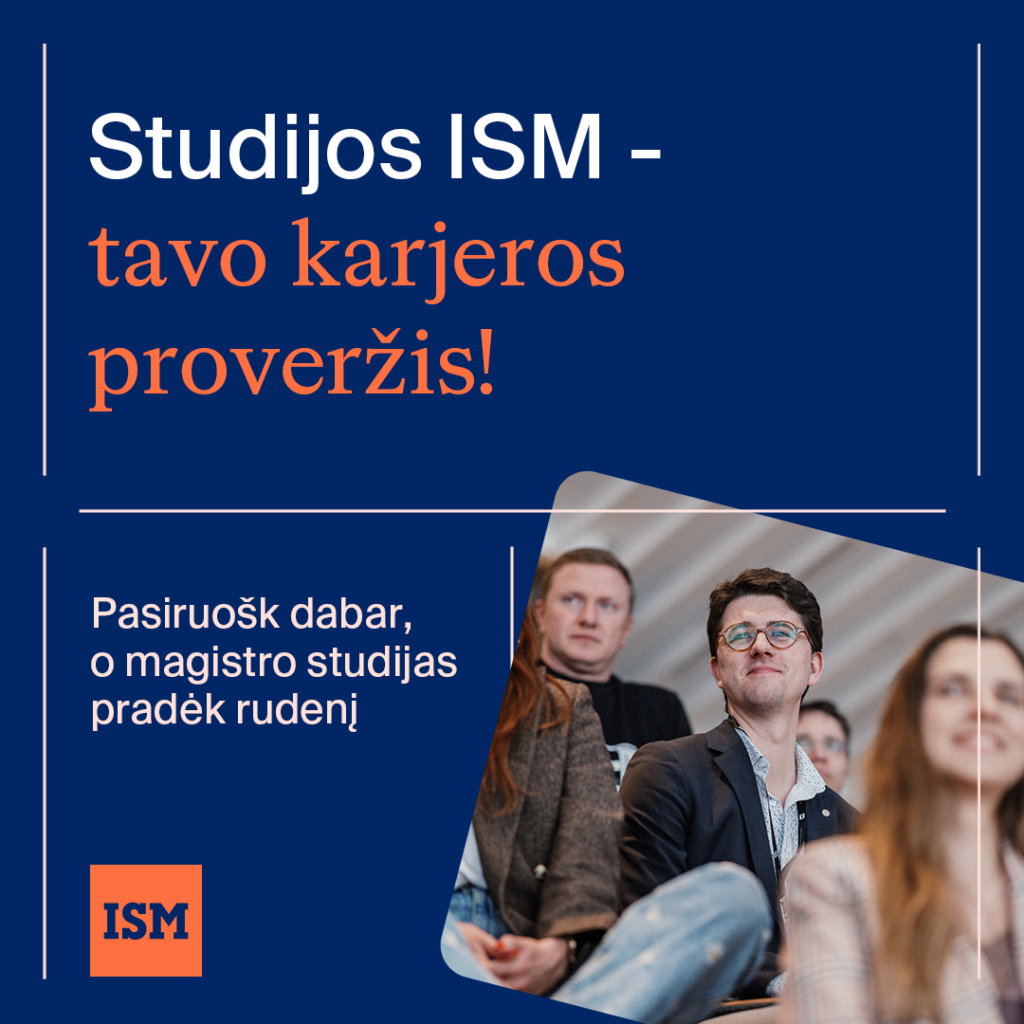Dr. Vita Akstinaitė, the director of ISM Global Leadership and Strategy Master’s Programme, and her colleagues have published their research on the benefits of using intuition in the Human Resource Management Journal (4 *, Academic Journal Guide 2021, Chartered Association of Business Schools). It is a top-level scientific journal in the field of human resources (HR).The authors of the study are Prof. Eugene Sadler-Smith, Dr. Vita Akstinaitė and Asst. Prof. Cinla Akinci.  Vita Akstinaitė
Vita Akstinaitė
About the research
Intuitions are judgements that arise automatically and non-consciously. Recognising when intuitive judgements are being used and whether doing so is appropriate is an important skill both for HR practitioners and managers involved in human resource (HR) processes. Because ‘intuiting’ is involuntary and unconscious it is difficult to access, monitor and control, however people can access and articulate their intuitive judgements through the spoken and written word. Identifying ‘linguistic markers’ of intuitions in spoken/written communications could help identify when/how intuition is being used in HR and improve HR practices in areas such as selection (e.g., obviating implicit/unconscious biases) and creativity (e.g., as a source of insights). We conducted a Main Study (with HR practitioners) and a Validation Study (with final year business management students). The first study consisted of 124 HR practitioners and the second study consisted of 175 students. Participants in both samples were asked to respond in writing to the question ‘what happens when you intuit?’. In order to analyse the textual data obtained, this research used computerised text analysis (CTA) to identify linguistic markers of intuition and to calculate the ‘Intuition Index’. The validated list of linguistic markers by presence for intuition in HR were: ‘feel’, ‘insight’ (reasoning), ‘causation’, ‘body’, ‘authentic’, ‘tentative’, ‘present’, ‘pronouns’, differentiation’, ‘articles’ (Intuition Index > 1.00). This research makes several contributions. Firstly, using CTA, it has identified a validated set of linguistic markers for intuition in HR (namely words in the feel, insight (reason), causation, body, authentic, tentative, present, pronouns and differentiation linguistic dimensions). Secondly, it shows that certain words can be a valid signal of intuitive processing and demonstrates how they manifest in language use, thus helping to build theory of the relationship between intuition and language. Thirdly, this research contributes to HR practice by proposing a practical way in which linguistic markers of intuitive language could be detected in HR practitioners’ spoken and written language. Such a technique could be used to improve current HR practices by ameliorating heuristics as a source of unconscious biases and improving HR practitioners’ self-awareness. Fourthly, it proposes the use of an ‘Intuition Index’ which could help organisations to diagnose intuitive language in HR practitioners’ verbal and textual communications as a measurable index for intuitive behaviours. One of the greatest enemies of the intelligent use of intuition is going with one’s gut without realising that one is doing so, therefore, the theoretical and practical implications of this study could help to not only mitigate this risk but improve current HR decision-making processes and outcomes more generally. By articulating intuitions verbally or textually and interpreting them in terms of the linguistic markers identified in this research, HR can contribute to better use of intuition in business decisions and improve its own practices in areas such as recruitment and selection. You can find the full study HERE. Sadler-Smith, E., Akstinaite, V. & Akinci, C. (2021). Identifying the linguistic markers of intuition in human resource (HR) practice (in press). Human Resource Management Journal (ABS AJG = 4*). DOI: https://doi.org/10.1111/1748-8583.12410



